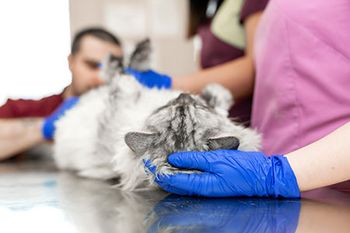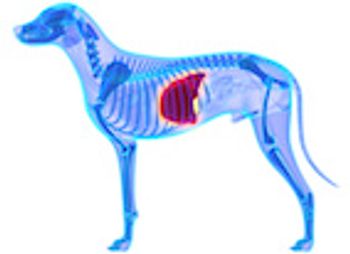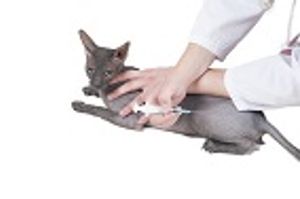
When cats present for emergency care, the veterinary team must consider not only the patients treatment needs but also its stress level. Heres a primer from a veterinary technician specialist.
Dr. Walden received her doctorate in veterinary medicine from North Carolina State University. She is a practicing veterinarian and a certified editor in the life sciences (ELS). She owns Walden Medical Writing, LLC, and writes and edits materials for healthcare professionals and the general public.

When cats present for emergency care, the veterinary team must consider not only the patients treatment needs but also its stress level. Heres a primer from a veterinary technician specialist.

Shock in cats is relatively easy to identify, and timely treatment is key to a successful outcome.

The ins and outs of treating urinary obstruction in your feline veterinary patients.

Successful long-term management of Pandora syndrome involves treating the cat, the environment and, last but not least, the client.

Addressing ongoing pain in cats can be tricky. Here are some tips for diagnosis and management of these patients.

Potential toxin exposure in cats should be considered an emergency. Here’s what you should know before initiating treatment in these patients.

These stress reduction techniques decrease the incidence of URIs and improve the welfare of shelter cats.

Diagnosing joint disease in feline patients can be difficult, but recognizing and managing this chronic, painful condition is important for achieving optimal quality of life.

Recent advances such as chimeritope technology could potentially be used to develop vaccines against other tickborne diseases as well.

Nutrition is a vital aspect of treatment planning for hospitalized patients with severe illnesses and those with chronic diseases.

Key considerations when evaluating wound treatment options for wild animals involve the type of injury and the individual patient’s needs.

An overview of the current thinking, including when to initiate antiepileptic drugs, supportive care for patients with status epilepticus, and long-term seizure control.

The basics of cancer care: identifying tumor type, staging, and treatment.

A survey of veterinary cancer specialists reveals which chemotherapeutics oncologists commonly avoid and which drugs they use to address these common adverse effects in their patients.

Researchers sought to determine the sensitivity of biochemical indicators for detecting acute and chronic hepatitis in Labrador retrievers.

Researchers in the United Kingdom have found a decreased risk for hyperthyroidism in certain cat breeds and an increased risk in longhaired cats.

The authors of a new study believe vaccination is an important component in controlling leptospirosis in horses. Here’s why.

Researchers studying the incidence of opportunistic fungal infections in dogs being treated for immune-mediated disease were surprised by their findings.

A single administration of gene therapy can provide long-term glycemic control without the need for insulin injections for diabetes mellitus.

Researchers in the United Kingdom explore the nature of attachment between people and their assistance dogs.

According to a new report, the analysis of 3328 mouse genes revealed models for 360 human diseases.

Two poster presentations at the 2017 ACVIM conference reported the results of recent research into equine PPID.

Study results suggest that laparoscopic OVE can be used to train veterinary students in laparoscopic techniques.

A recent study compared results of ACTH stimulation testing using the intravenous and perivascular routes of injection.

Brazilian researchers evaluated the effectiveness of 4 ultrasonographic techniques for predicting malignancy in canine mammary tumors.

In some patients, fundic examination reveals signs of hypertensive retinopathy. However, not all cats have these ocular signs.

Does rabies vaccination offer a nonspecific protective effect in dogs and, if so, what might this mean for children?

Teleradiology can vastly improve diagnostic capabilities and patient outcomes, but only if it’s done right. Here’s how to ensure success.

Researchers have uncovered similarities in the cancer-associated stroma of dogs and humans, providing more evidence to support the field of comparative oncology.

Experts discuss the use of firocoxib in horses, including benefits of selective COX-2 inhibition, FDA restrictions, and the importance of proper dosing.

Published: August 30th 2016 | Updated:

Published: August 29th 2016 | Updated:

Published: September 5th 2016 | Updated:

Published: September 9th 2016 | Updated:

Published: September 7th 2016 | Updated:

Published: September 13th 2016 | Updated: